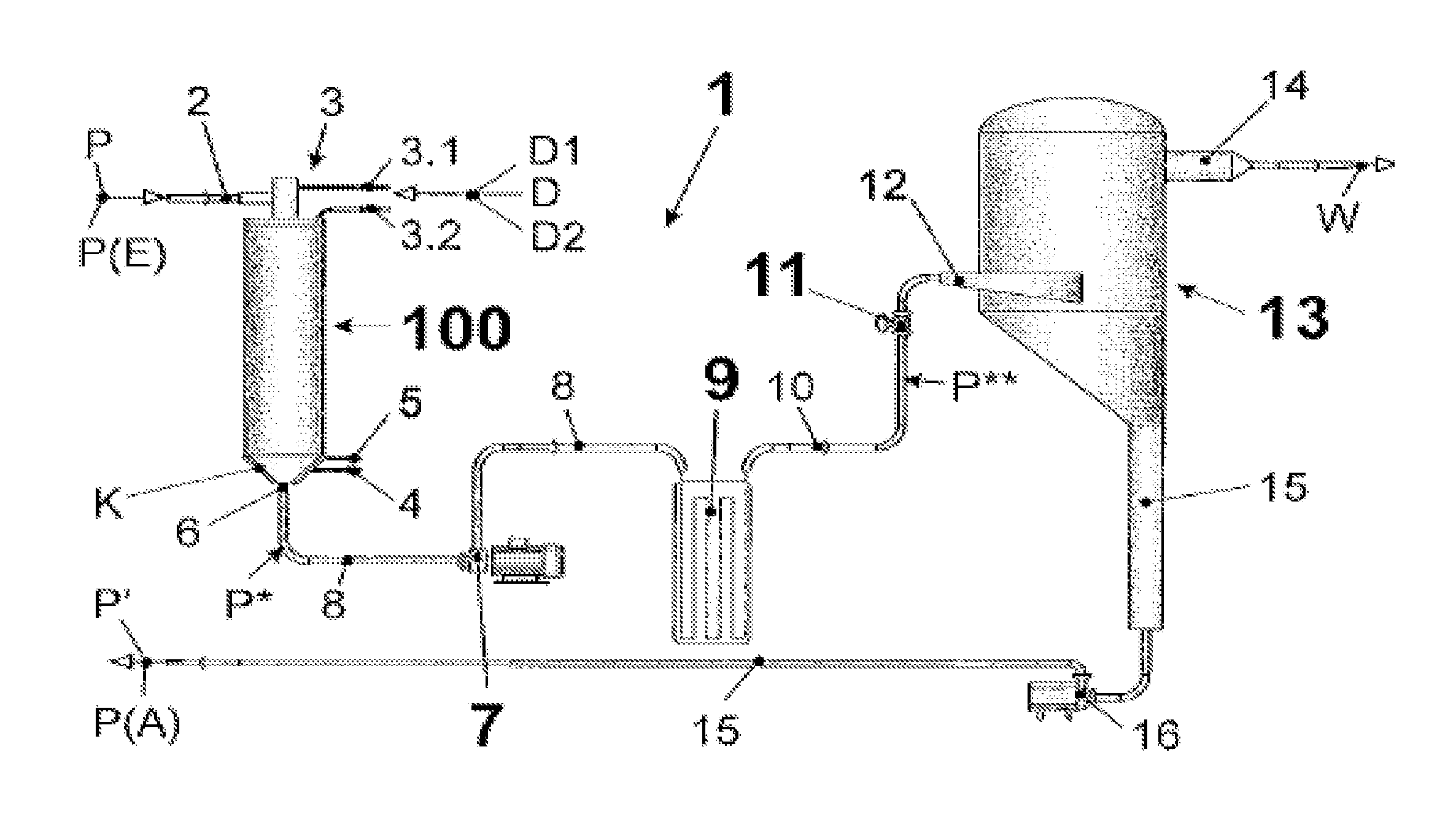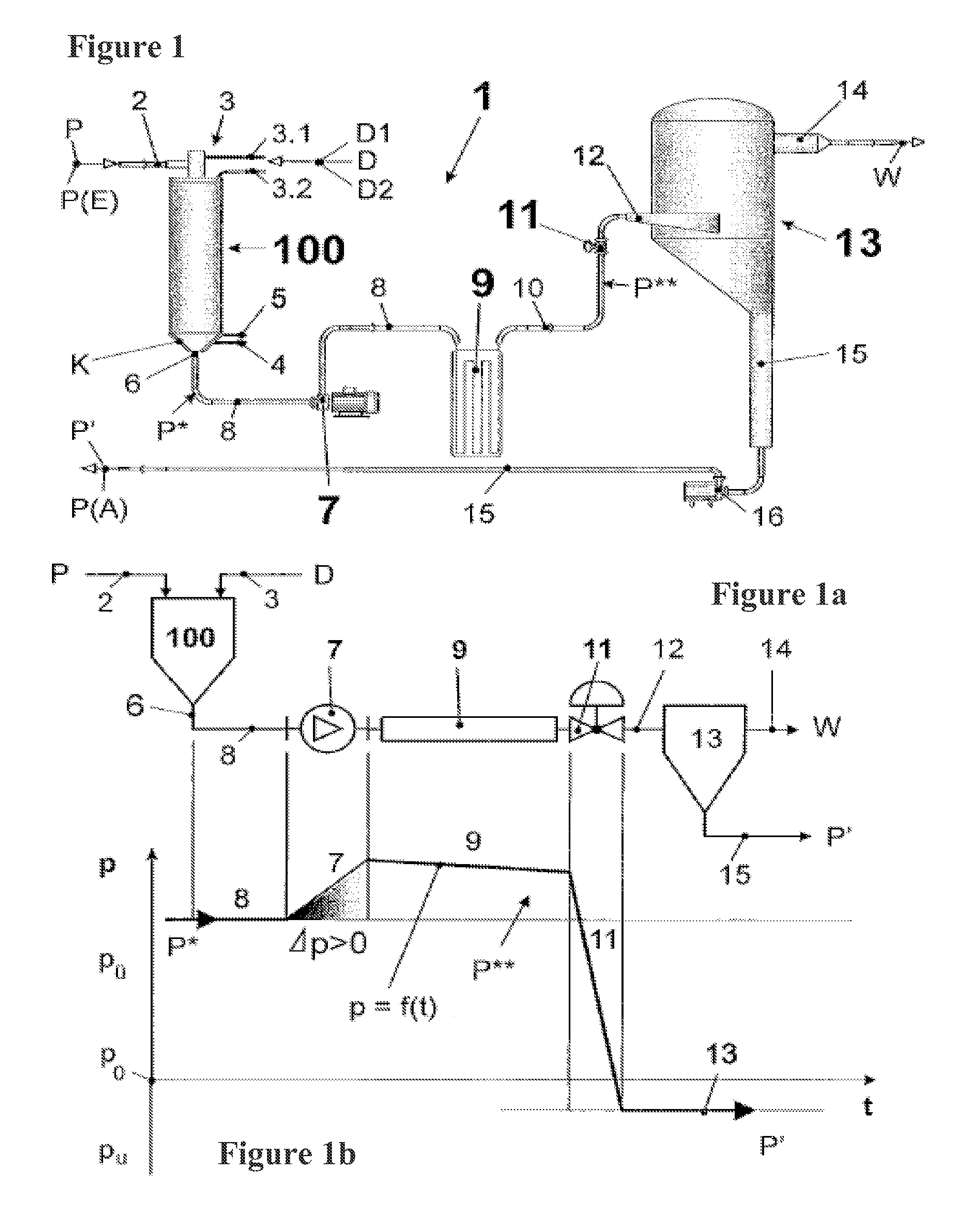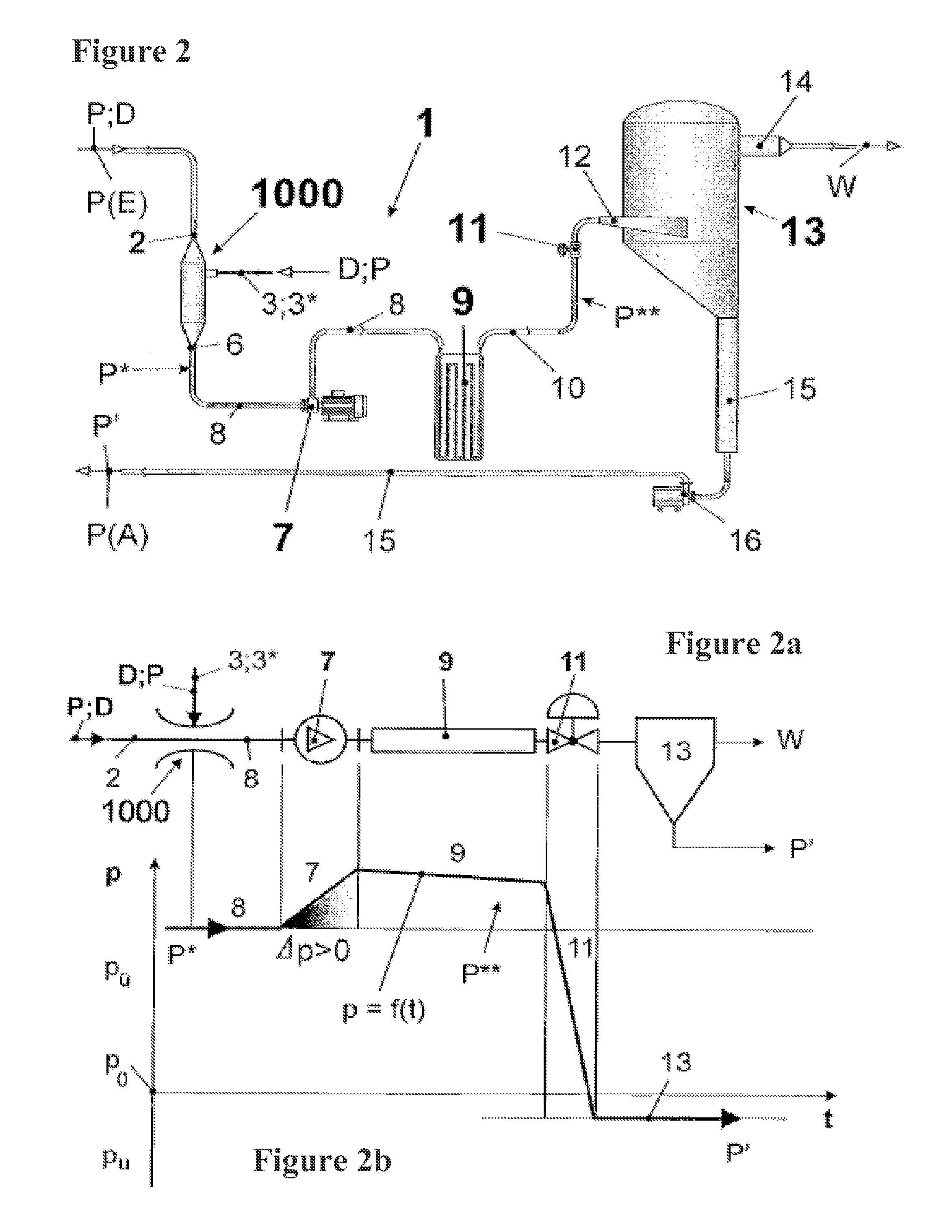Method and UHT installation for treating heat-sensitive liquid food products
a technology of heat-sensitive liquid and food products, applied in the field of heat-sensitive fluid food products treatment, can solve the problems of high investment cost, low vitamin loss, complicated process technology, etc., and achieve the effect of increasing pressur
- Summary
- Abstract
- Description
- Claims
- Application Information
AI Technical Summary
Benefits of technology
Problems solved by technology
Method used
Image
Examples
first embodiment
[0056]Due to the system characteristics of the UHT system 1 in the first embodiment as described above, the process characteristic according to the invention can be implemented that consists of the fact that the heated food product P*, before its heat maintenance as seen in the flow direction, undergoes a predetermined pressure increase Δp at a predetermined, unchanging location with the goal described above. This location, independently of fluctuations in operating conditions and due to the special displacement pump characteristic that achieves a decoupling of the system pressures p upstream and downstream of the displacement pump 7, is permanently at the suction-side inlet of the displacement pump 7 and thus, due to the preferably narrow and direct connection of the latter to infusion chamber 100, also at outlet 6.
second embodiment
[0057]the UHT system 1 according to the invention (FIGS. 2, 2a, 2b) differs from the first shown in FIGS. 1, 1a, and 1b in that the mechanism in which the food product P to be treated is subjected to direct heating by means of introduction of steam D is now implemented according to the invention as an injector 1000. The other components of the UHT system 1 as shown in FIG. 1 are, insofar as they do not directly belong to infusion chamber 100, embodied identically in the second embodiment and have the same corresponding effects there. We will therefore forego a description.
[0058]The injector 1000, in a first embodiment, has on the one hand an inlet 2 for the introduction of the food product P to be treated, which leaves it on the other hand at its outlet 6 as the heated food product P*. A steam inlet 3 is used to introduce the steam D needed for direct heating, whereby steam D flows into the food product P acting as the driving stream. This first embodiment is therefore characterized...
PUM
 Login to View More
Login to View More Abstract
Description
Claims
Application Information
 Login to View More
Login to View More - R&D
- Intellectual Property
- Life Sciences
- Materials
- Tech Scout
- Unparalleled Data Quality
- Higher Quality Content
- 60% Fewer Hallucinations
Browse by: Latest US Patents, China's latest patents, Technical Efficacy Thesaurus, Application Domain, Technology Topic, Popular Technical Reports.
© 2025 PatSnap. All rights reserved.Legal|Privacy policy|Modern Slavery Act Transparency Statement|Sitemap|About US| Contact US: help@patsnap.com



